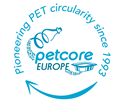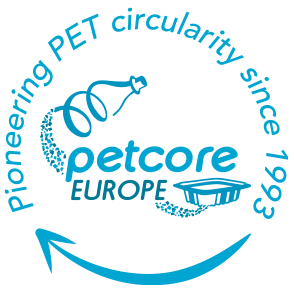Fibres
Reprocessed flakes are melted and spun into strands. It is the length and the thickness of the resulting fibre to determine which product the reclaimed material will be turned into. Fibres from 5mm to 150mm large (staple grades) are the ones most sought after. Larger diameter fibres are used to stuff anoraks, sleeping bags and soft toys. Recycled PET is also used to spin fibres of smaller diameter. These are woven into "polar" fleece fabric used for sweatshirts, jackets and scarves. Such fabrics can contain up to 100% of recycled material, and a polar fleece jacket uses 25 recycled PET bottles.
Polyester fibres are currently being engineered to provide qualities that are similar to upholstery foams. These advanced hollow "conjugated" polyester fibres can contain up to 35% recycled material.
Packaging
Egg containers and other preformed plastic boxes (such as fruit boxes) account for about 25% of total recycled PET usage. Other recycled PET packaging applications include containers for water, soft drinks, juices, toiletries and household products. These are said to "close the recycling loop" as they allow a container to be recycled into a new container and all recycled containers remain recyclable.
New Applications
The PET industry is in constant search for new applications for reclaimed material. There are many developing markets for recovered PET:
- Polyurethane foams can be made thanks to polyester polyols developed from PET flakes.
- Engineered resins made from recovered PET can be injection moulded to manufacture computer and automotive parts.
- Other alternative production processes use "spunbonded" PET in the manufacture of shoe liners, webbing and geotextiles (e.g. shoes and backpacks).


